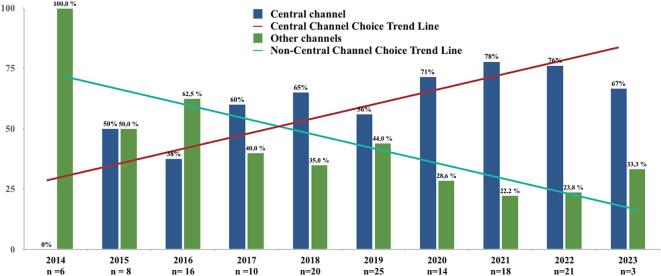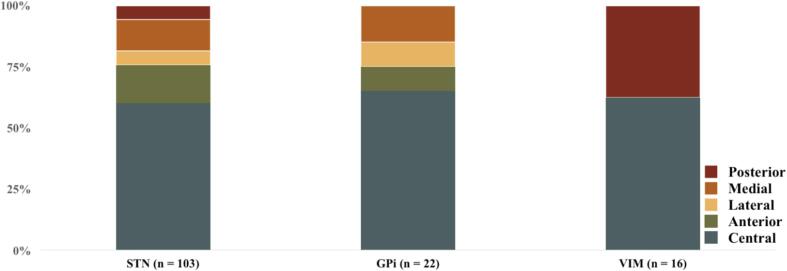The role of intraoperative monitoring in target selection in deep brain stimulation: A single centre study
IF 1.8
Q3 CLINICAL NEUROLOGY
引用次数: 0
Abstract
Introduction
Intraoperative microelectrode recording (MER) and intraoperative test stimulation may provide vital information for optimal electrode placement and clinical outcome in movement disorders patients treated with deep brain stimulation (DBS). The aims of this retrospective study were to determine (i) how often the planned (imaging based) placements of electrodes were changed due to MER and intraoperative test stimulation in Parkinson’s disease (PD), dystonia and essential tremor (ET) patients; (ii) whether the frequency of repositioning changed over time; (iii) whether patients’ age or disease duration (in PD) influenced the frequency of repositioning.
Methods
Data on the planned and the final placement of 141 electrodes in 72 consecutive DBS treated patients (52 PD, 11 dystonia, 9 ET) was collected over the first 8 years of DBS implementation in a single center. An association between the rate of electrode repositioning and the patients’ age, disease duration and the time/year of implementation was explored.
Results
Analysis of all targets showed a change in final electrode placement in 39.7 % (56/141); 39.8 % (41/103) in PD, 40.9 % (9/22) in dystonia and 37.5 % (6/16) in ET. Annual analysis showed a decrease in rate of repositioning between the centre’s first and eighth year (p = 0.013) of implementation. No correlation was found between electrode repositioning rate and patient age (p = 0.42) nor disease duration (p = 0.09) in PD.
Conclusion
This retrospective analysis confirms the benefit of MER and intraoperative test stimulation during DBS surgery in determining the final electrode position during the early / initial period of implementing the procedure. Our findings show a learning curve in successful preoperative planning in our centre achieved through experience.


术中监测在深部脑刺激靶选择中的作用:一项单中心研究。
术中微电极记录(MER)和术中试验刺激可能为运动障碍患者接受深部脑刺激(DBS)治疗的最佳电极放置和临床结果提供重要信息。本回顾性研究的目的是确定(i)在帕金森病(PD)、肌张力障碍和特发性震颤(ET)患者中,由于MER和术中试验刺激,电极的计划(基于成像的)放置改变的频率;(ii)重新定位的频率是否随时间而改变;(iii)患者的年龄或病程(PD)是否影响重新定位的频率。方法:收集了72例连续DBS治疗患者(52例PD, 11例肌张力障碍,9例ET)在DBS实施的前8年中141个电极的计划和最终放置数据。探讨电极重新定位率与患者年龄、病程和实施时间/年之间的关系。结果:所有靶标分析显示,39.7%(56/141)患者最终电极放置位置发生改变;PD为39.8%(41/103),肌张力障碍为40.9% (9/22),ET为37.5%(6/16)。年度分析显示,在中心实施的第一年和第八年之间,重新定位率有所下降(p = 0.013)。PD患者电极复位率与患者年龄(p = 0.42)和病程(p = 0.09)无相关性。结论:本回顾性分析证实了在DBS手术早期/初始阶段,MER和术中试验刺激在确定最终电极位置方面的益处。我们的研究结果表明,通过经验,我们中心在成功的术前计划方面取得了学习曲线。
本文章由计算机程序翻译,如有差异,请以英文原文为准。
求助全文
约1分钟内获得全文
求助全文
来源期刊

Clinical Parkinsonism Related Disorders
Medicine-Neurology (clinical)
CiteScore
2.70
自引率
0.00%
发文量
50
审稿时长
98 days
 求助内容:
求助内容: 应助结果提醒方式:
应助结果提醒方式:


